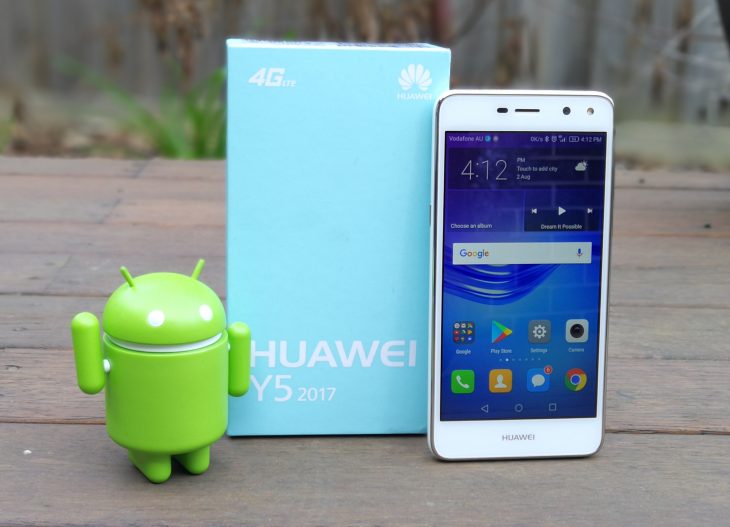
We are giving up the very low-end devices because the margin in this is extremely low, and it’s not making enough profit for us.Richard Yu, CEO of Huawei Consumer Business Group
For a company that has made it’s name on low end and mid-range devices it is a strange decision but the figures must speak for themselves. Huawei have made some great mid-range and low end phones over the past few years but with that set to end soon we may be looking at one of the last low-end phones from Huawei; the Y5 2017.
The Y5 2017 is most definitely a low-end phone coming in at a sub-$200 price. Huawei have made a habit of packing in some impressive specs and features into lower end phones in recent years. Read on to see how they fared with the Y5 2017.
Huawei Y5 2017 What’s inside?
The packaging of the Huawei Y5 2017 (henceforth to be known as the Y5), comes in a fairly plain box which is reminiscent of the GR5 2017 box from earlier this year. The phone itself is most definitely marketed at the low end range of the smartphone market so nothing fancy should be expected.
The box includes the standard charger, microUSB cable, earphones and of course the phone. Nothing special but for a sub-$200 phone it is important that the buyer knows that they are still getting all the standard inclusions and nothing is left out.
Huawei Y5 2017 What are the specs?
As with so many low-end phones the processor included is a Mediatek processor, the Mediatek MT6737T Quad-core 1.4GHz processor. The processor is a cheap low end processor as is expected but seems to function well enough without breaking any records.
The Mediatek processor is paired with 2GB of RAM, really the minimum an Android phone should have in 2017. The phone is really the minimum of everything that is and should be included in a smartphone in 2017. There is just 16GB of onboard storage which fortunately can be expanded using the microSD slot with cards up to 128GB in size.
The front camera is a decent 5MP shooter and the main/rear camera is an average 8MP camera. There is nothing fancy here. It just takes photos without any frills.
The connectivity is as basic as it gets with Wi-Fi 802.11 b/g/n and Bluetooth 4.0 LE. In a nice addition there is an FM radio. I do like how so many manufacturers include an FM radio in their software, and most of the times they work fairly well. The radio on the Y5 worked very well indeed with it picking up a surprising number of FM radio stations — sure there is always online streaming radio apps but they cannot stream AFL and many other events.
The display is a 5 inch IPS LCD display with a 1280 x 720 pixel resolution. The display was decent at producing colours but was one of the lower nit displays I have used. It’s maximum brightness was a long way off many other displays I have used.
The phone is powered by a 3000mAh battery. We are seeing some flagships with high end specs come in with battery sizes at this mark while at the same time having much higher specs. The battery life on the Y5 did not exceed most other phones I have used which may be due to the processor or any of the other cheaper components being less power efficient. The battery was big enough to last a full day on heavy usage but people buying a phone in this range are not normally heavy users so they would expect to get a lot more battery life than I did.
One thing to keep in mind though is that there is no fast charging on this phone. The charging is super slow — possibly how charging was before fast charging came along but it has been a long time since I have used a phone that charged this slowly.
Huawei Y5 2017 What’s it good at?
The Y5 is decent without being dazzling in any one area. Reliable is what I would call it. It is slow and steady; not slow and laggy. You can see that it is doing something it just takes a bit longer than usual to do it. It still gets it done without any major holdups; it’s like your drunk Uncle talking to you at the end of a big night. He gets where he wants to eventually just takes a while to reach the destination.
One big plus for the Y5 is what I like to call the “Useful Bixby” button. It is a blank button called the “Easy Key” that can be mapped in multiple ways. The button is located on the left hand side of the device and can be mapped for three different functions, one each for a press, double press and a press and hold. Any app can be opened using the button as well as some shortcuts designated by Huawei. Samsung really should look at this implementation. Sure, make one of the functions always Bixby but surely they can make the button do other things that could actually be useful.
The phone is made of plastic, well, the backing is. The back is removable to be able to insert the SIM card and microSD. The plastic backing means that it is less likely to break than one of the glass-backed phones that so many manufacturers opt for these days. So while plastic is cheaper to make and definitely feels cheaper in the hand there are some positives to it.
Huawei Y5 2017 How’s the camera?
Quick disclaimer before discussing the camera — the phone is a sub-$200 phone. Don’t go into it expecting to acquire Pixel or Galaxy S8 quality pictures.
The photos taken were ok while not being breath-takingly stunning. In good light I was able to take decent shots at the park with the kids, while as with most cameras in phones that are NOT flagships it struggled in low light conditions. As Huawei and many other manufacturers like to do the default setting for the selfie camera was with super-beauty mode. Sure I may need it to get a decent selfie but the resultant image looks incredibly fake.
For a person looking at purchasing this phone the camera is good enough. No one buys a cheap phone like this expecting to take DSLR-quality pictures. I hardly think Huawei will be putting billboards up everywhere with Y5 pictures with the tag line “#shotonY5”.
Selfie Beauty vs Normal:
Huawei Y5 2017 What’s it not so good at?
I hate sounding like a broken record but while manufacturers keep attempting to ruin Android I am going to keep calling them on it. Huawei have done a fairly decent job with EMUI on the P10 and P10 Plus but seem to have forgotten the advancements they have made when it comes to the software on their lower end phones. You would think that once the hard lifting is done with the software on the high-end, bigger margin phones the changes could be implemented along the entire range. Unfortunately not.
Whether the lack of software enhancements included are a cost saving measure or related to the non-Huawei CPU inside (Mediatek don’t have a great record with their lower end chips for any type of ongoing support), it is very disappointing.
The launcher is even worse than on the P10 Plus and offers very few options and does not allow an app drawer to be implemented. Sure Nova Launcher, or any other third-party launcher can be used to fix this but the fact that Huawei continue to persist with such shoddy launchers is very disappointing. They are the third highest smartphone-selling manufacturer in the world and this is the best they can do?
There is also the common issue with many Chinese phones where it automatically turns off your accessibility settings after a random period of time or if the display has been turned off. For someone who uses SideControl, Pie Control and Last Pass which all require this accessibility access it is extremely frustrating. The Huawei P10 Plus does not do this anymore so possibly it has been fixed in the latest EMUI version; another reason it is annoying that they haven’t put the latest EMUI on the phone.
Continuing on with the software theme — the software is pure Huawei circa 2015. There are very few tweaks to Android in this incarnation. I’m not sure how much work it is to port some of their more useful tweaks to a lower-end phone but the cost of hiring someone to work on the software for that long is obviously inhibitive. There are very few. The software was possibly the slowest I have used but having used mostly high-end phones my standards are quite high. While it was reliable, it was also reliably slow.
There is the standard Huawei Battery Manager that seems to work fairly well on the lower end phone but I still stand by the statement that Android in 2017 does (should?) not need such a thing — this is assuming Android has not been “messed with” too much.
Speaking of 2015, the software is based on Android 6.0. Not good enough Huawei when you have phones running 7.0. It’s not like the Y5 would have been in development that long — why not start with an Android 7.0 base?
That’s enough about the software, how about the hardware?
The display is one of the less touch-sensitive phones I have used. It definitely required a firmer touch for that touch to register; there is a setting within “Smart Assistance” to turn on “Touch screen high sensitivity mode” and is recommended “if you are using a screen protector that reduces screen sensitivity”. The only screen protector on is the one it ships with. Turning on this option does alleviate most of the display touch issues so much so that I wonder why they just do not make the setting permanent. The display’s accuracy wasn’t as good as most other phones either. Once again, sub-$200 phone will get you sub-$200 phone parts.
The is no fingerprint sensor on the phone which is extremely rare these days. It has been a long time since I have used a phone without a fingerprint sensor but it was something I got used to (although I would rather not). Yet again, sub-$200 phone, sub-$200 parts (or lack of).
Huawei Y5 2017 Should you buy one?
While I seem to have mentioned a lot of negatives in the review sometimes that’s how a review rolls. It does not mean that we do not recommend a phone but we feel that you, the buyer, should be informed of the negatives we found.
The Huawei Y5 2017 is a plastic-backed phone which is slow, the display is not overly sensitive, and is without a fingerprint sensor. The software leaves a lot to be desired but much of it can be fixed with a third party launcher but the software is far from the worst I have used.
The phone, while slow, is reliable and just chugs away, doing what it needs to be doing. The camera is half decent without and the battery life should be enough for a full days use in those that this phone is targeted at. The display is a comfortable 5 inches and although it has a plastic back, feels good in the hand.
In the end it’s a sub-$200 device and I really cannot go past that. It may not be flagship quality but it doesn’t have to be at that price. If you, or someone you know, just wants a REALLY cheap phone that just keeps on chugging along getting the job done and takes half decent pictures then I can recommend the Huawei Y5 2017. One warning though, temper your expectations — it costs under $200.
The Huawei Y5 is available from The Good Guys now, and will be available from Coles, Australia Post and Big W from August 26th.


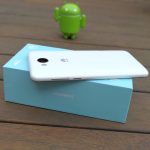
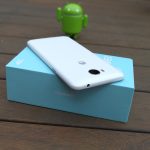
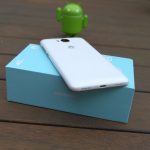

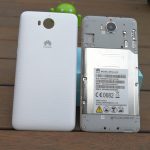
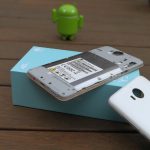




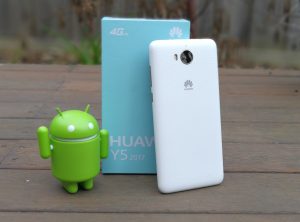











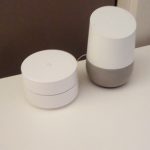


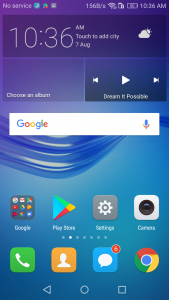
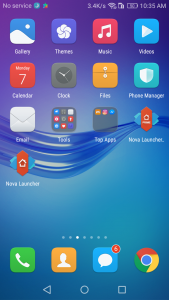
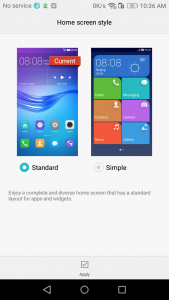

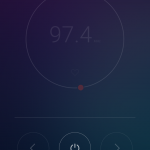
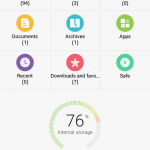
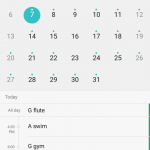


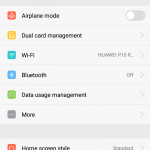

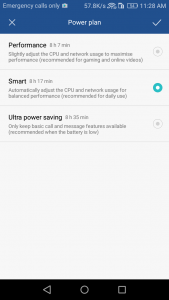
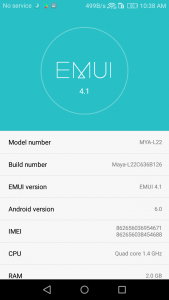
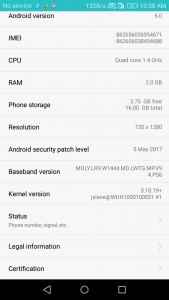



“Mediatek don’t have a great record with their lower end chips for any type of ongoing support”…. That’s funny because Huawei have an even worse record of never updating carrier gimped versions of their 2016 flagship phone, the P9. Anyone buying a Huawei handset should expect it will never be updated, low-end or flagship. Most P9s are probably getting dumped on eBay, etc by now due to Huawei’s refusal to address the update issue. Abandoning the low-end and refusing to keep their flagship customers happy, let’s hope they slip from 3rd place pretty quickly.
Considering what you could import from China for the same price I am not sure it is very good value. That said to import anything takes time and effort which may make this phone more attractive but I would still suggest trying your luck with a “no namer”.